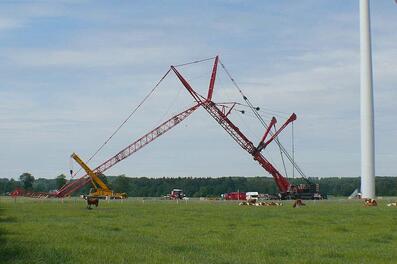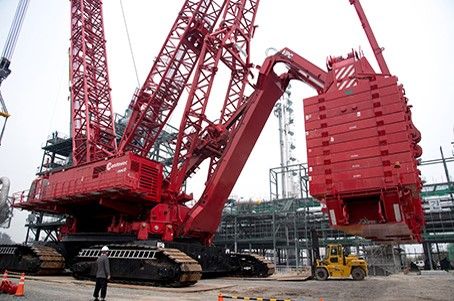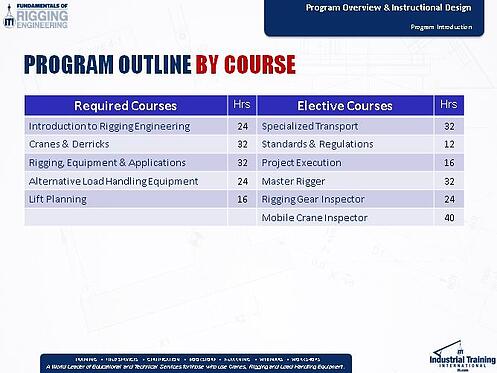Rigging Engineering with Mobile Crane Heavy Lift Attachments
When it comes to rigging and load handling, a lift planner must have a solid understanding of the equipment and configurations that are available to them. Much like how a football coach needs the right quarterback to lead an offensive scheme, a lift planner needs to know how to select the right equipment for each unique project. If the lift planner discerns that a mobile crane is the right equipment for the job, as opposed to all the other methods of load handling, he or she must then decide which crane configuration is best suited to accomplish the project considering many constraints - cost, mechanical requirements (e.g. load chart), mobilization time, work area, and others. Further down the decision-tree lay if heavy lift attachments for mobile cranes, which create opportunities for incredible strength and complexity, are required for a heavy, complex lift. So let's learn about some heavy lift attachments and their capabilities.
"Mobile Crane Configurations" is a Lesson in the Fundamentals of Rigging Engineering Program taught by Larry Shapiro, PE, a leading engineer in the USA and Principal of Howard I. Shapiro & Associates. Shapiro conducts construction, structural and forensic engineering. Howard Shapiro, Larry's late father, was the original author of the industry-leading book, Cranes & Derricks, which Larry and his brother Jay have recently completed the fourth edition. This Lesson is one of over 25 lessons in the Cranes & Derricks Course taught by Shapiro, David Duerr (2DM Associates), Ron Kohner (Landmark Engineering), Keith Anderson (Bechtel), Jim Yates (Barnhart Crane & Rigging), and Joe Kuzar (ITI).
This lesson highlights several heavy lift attachments and options lift planners should consider available to them. Shapiro explains that:
Mobile crane manufacturers have devised various schemes that extend reach and lift capacities beyond the envelope of conventional machines, sometimes dramatically. These arrangements require special attachments that are not part of the everyday equipment set, and time to set up; substantial space and site preparation may be needed. They may introduce working procedures that are too cumbersome for all but the most demanding lifts and that require more training and attentiveness than regular operations. Moreover, as dramatically as the outer reach of the lift envelope is improved by these systems, backward stability considerations may curtail lifting at close quarters.
Two general principles are behind these arrangements:
- Increase Overturning Resistance - Additional overturning resistance lessens or eliminates the stability limitations of the carriage.
- Increase Boom Strength - Stress on the boom is reduced to allow an increase in its capacity.

The second principle, increase boom strength, is illustrated by the use of backstay struts and cables which stiffen the cantilevers on a telescopic boom crane. Although backstays require a few hours of additional installation time, they compensate for the inherent structural limitation and limberness of a cantilever. Load capacities are thus enhanced, as opposed to being limited by stress and deflection. Here is an example of a Liebherr LTM 1500 telescopic truck crane with a guy attachment that stiffens the boom, increasing structural limitations:

There are a variety of proprietary heavy lift arrangements that use both of the aforementioned principles to transform mobile cranes. Crawler cranes are often renovated into lifting leviathans. Assembly and disassembly of these arrangements require considerable ground space and have high logistical costs, but they can be capable of lifting as much as 2,000 tons (1800 t) and reach excesses of 700 feet (213 m). Here is an example of a Lampson Transi-Lift LTL-3000:

Stability against overturning is often enhanced by supplementary counterweights set behind the superstructure. The counterweight tray might roll on the ground, be placed on a rail or track system, or even be suspended in the air. The Mammoet PTC 35 DS Ring Crane's counterweights are shown here with the counterweight carrier riding on a track and the boom is stepped onto a carrier extending from the superstructure:

The Manitowoc 31000 utilizes a suspended counterweight system that remains aloft while the load is on the hook (see below). Operators are site personnel are taught that a clear path must exist for the counterweights when the crane swings.

The key thought that Shapiro leaves with students is, "The last observation comports with a broader one: operations associated with heavy-lift attachments require rigorous planning and organization." Mobile cranes are designed to operate within a set of constraints when they come "out of the box". Shapiro urges students that once heavy lift attachments are installed, incredible additional attention should be spent on planning compared to everyday crane use.
If you'd like to learn more about this lessons and others in the Fundamentals of Rigging Engineering Program,
About The Fundamentals of Rigging Engineering Program
Fundamentals of Rigging Engineering is ideal for lift planners, rigging engineers, and other key personnel who strategize and plan crane and rigging activities.
The Program Preview will outline the:
- Program Outline by Course
- Instructor Profiles
- Pricing Options
- Customers
- Supporters





COMMENTS